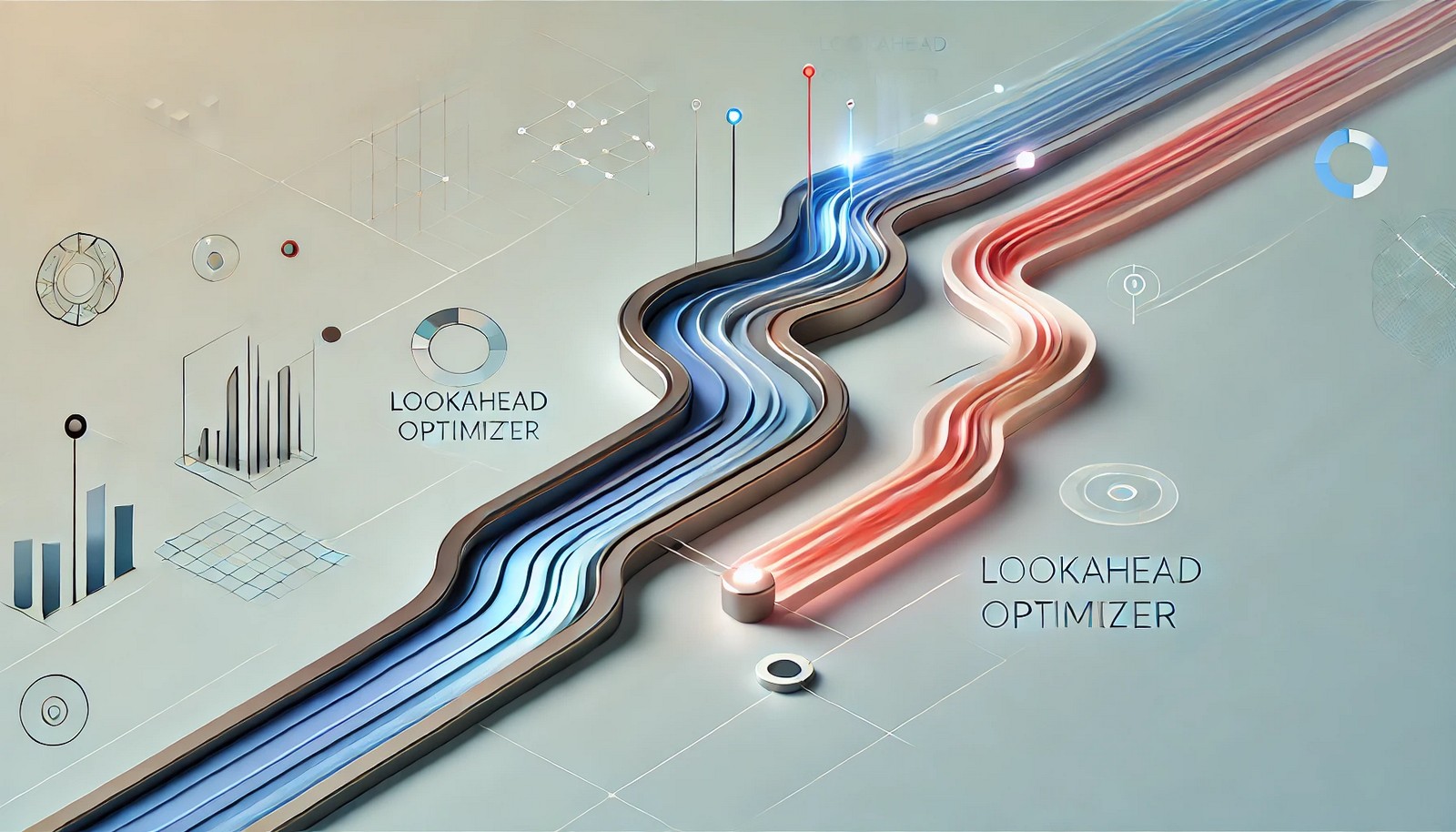Lookahead Optimizer

Quick Navigation:
- Lookahead Optimizer Definition
- Lookahead Optimizer Explained Easy
- Lookahead Optimizer Origin
- Lookahead Optimizer Etymology
- Lookahead Optimizer Usage Trends
- Lookahead Optimizer Usage
- Lookahead Optimizer Examples in Context
- Lookahead Optimizer FAQ
- Lookahead Optimizer Related Words
Lookahead Optimizer Definition
The Lookahead Optimizer is an advanced machine learning optimization technique that improves the learning process by iteratively updating a model’s parameters. By taking a series of "lookahead" steps that predict the best direction for parameter adjustments, it optimizes not just based on current gradients but also by forecasting where the model should head next. This results in faster convergence, improved generalization, and reduces the risk of overfitting, making it a powerful tool in deep learning frameworks.
Lookahead Optimizer Explained Easy
Imagine you’re hiking up a hill to reach the top, but you can’t see the entire path. Instead of just taking each step blindly, you pause after a few steps to look ahead and plan a better route. The Lookahead Optimizer in AI is like that: it helps the model to “pause” and “look ahead,” ensuring it doesn’t stray too far off course and finds the best way up to an accurate solution.
Lookahead Optimizer Origin
The Lookahead Optimizer emerged as part of ongoing research to address challenges in deep learning optimization. By integrating insights from both traditional gradient-based optimizers and advanced prediction techniques, it was introduced to enhance model stability and accelerate training times in complex AI applications.
Lookahead Optimizer Etymology
The term "Lookahead Optimizer" originates from the concept of "looking ahead" to foresee optimal parameter changes, integrating foresight into the optimization process rather than relying solely on immediate feedback.
Lookahead Optimizer Usage Trends
In recent years, the Lookahead Optimizer has gained popularity within the AI community, especially in applications where computational efficiency and generalization are critical. Its effectiveness in balancing rapid training with robust model performance has made it a preferred choice in fields like image recognition, natural language processing, and autonomous systems. Research continues to explore variations and improvements for broader adoption across diverse machine learning tasks.
Lookahead Optimizer Usage
- Formal/Technical Tagging:
- Machine Learning
- Optimization Techniques
- Deep Learning - Typical Collocations:
- "lookahead optimizer algorithm"
- "iterative lookahead steps"
- "model training with lookahead optimization"
- "optimization with lookahead prediction"
Lookahead Optimizer Examples in Context
- In natural language processing, the Lookahead Optimizer aids in improving sentence prediction accuracy by helping the model anticipate the structure of language more effectively.
- Image classification models benefit from the Lookahead Optimizer as it reduces overfitting and speeds up convergence, allowing for quicker and more reliable predictions.
- Autonomous vehicle systems apply the Lookahead Optimizer to enhance path prediction, enabling smoother navigation and more accurate obstacle detection.
Lookahead Optimizer FAQ
- What is the Lookahead Optimizer?
The Lookahead Optimizer is a machine learning tool that enhances training by forecasting parameter updates and improving convergence. - How does the Lookahead Optimizer differ from traditional optimizers?
Unlike traditional optimizers, the Lookahead Optimizer updates parameters iteratively and leverages predictive "lookahead" steps. - What are the benefits of using a Lookahead Optimizer?
Benefits include faster convergence, improved generalization, and reduced risk of overfitting. - Is the Lookahead Optimizer used in deep learning?
Yes, it is widely applied in deep learning models to enhance performance in various AI applications. - How does the Lookahead Optimizer improve generalization?
By leveraging future steps, it stabilizes parameter adjustments, leading to better generalization on new data. - Can the Lookahead Optimizer be combined with other optimizers?
Yes, it is often combined with other algorithms like Adam to optimize different aspects of model training. - What type of tasks benefit most from Lookahead Optimizers?
Tasks that require efficient learning and accurate predictions, such as image recognition and NLP, benefit significantly. - How does it impact computational costs?
While it may require more computational steps, the Lookahead Optimizer typically reduces overall training time by achieving faster convergence. - Is it suitable for real-time applications?
With optimizations, the Lookahead Optimizer can be adapted for real-time AI applications, such as in autonomous vehicles. - Who developed the Lookahead Optimizer?
The Lookahead Optimizer was developed by researchers seeking more efficient machine learning methods and published as part of the latest advancements in AI optimization.
Lookahead Optimizer Related Words
- Categories/Topics:
- Deep Learning
- Machine Learning Optimization
- Predictive Modeling
Did you know?
The Lookahead Optimizer concept gained widespread attention when researchers found it could outperform traditional methods on challenging datasets, such as those in autonomous driving simulations. This sparked further research into predictive optimization techniques in AI.
PicDictionary.com is an online dictionary in pictures. If you have questions or suggestions, please reach out to us on WhatsApp or Twitter.Authors | Arjun Vishnu | @ArjunAndVishnu

I am Vishnu. I like AI, Linux, Single Board Computers, and Cloud Computing. I create the web & video content, and I also write for popular websites.
My younger brother, Arjun handles image & video editing. Together, we run a YouTube Channel that's focused on reviewing gadgets and explaining technology.



Comments powered by CComment